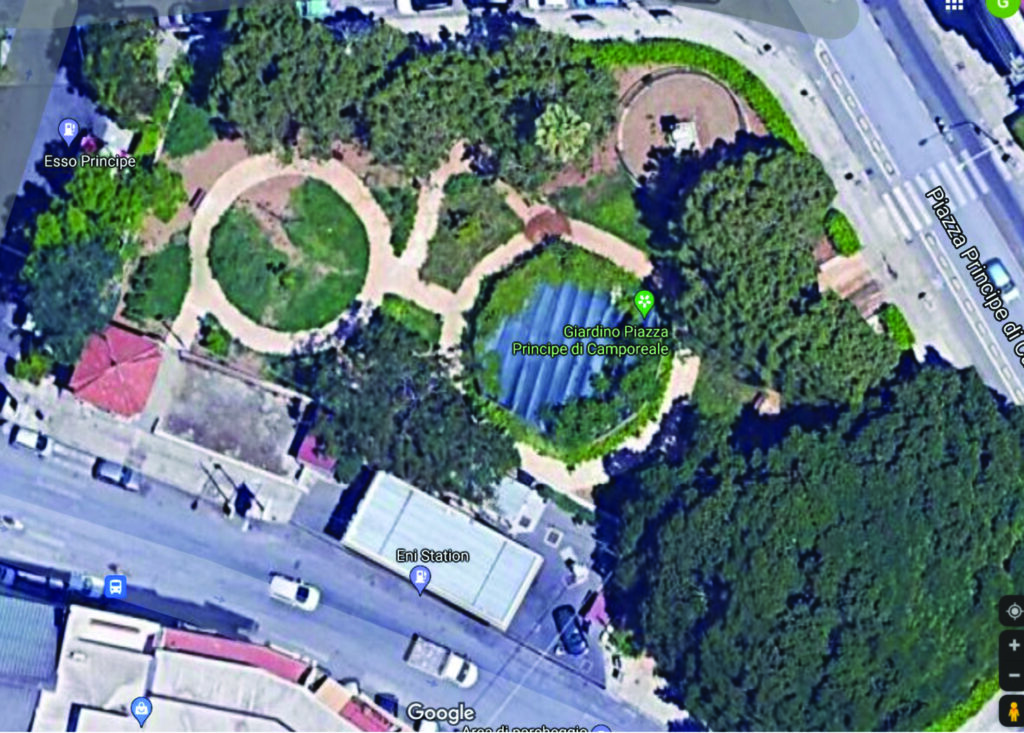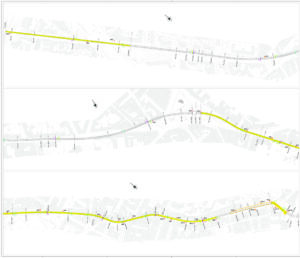Bridge monitoring system in compliance with C.S.LL.PP. Guidelines
by Massimiliano Zaccagnini By NTSG Italy, a single IT platform for the safety and risk management of bridges and

by Massimiliano Zaccagnini.
Magazine: SERVIZI A RETE JANUARY FEBRUARY 2023
The South-Eastern Collector Sewer in the city of Palermo is one of the key works among those included in the General Plan of the Sicilian city’s sewer network, whose main construction site is located in the heart of the city, in a highly urbanised area.
The collector, according to plans that have been going on for years, will allow the disposal of 70,000 litres of sewage per second (white and black water), crossing almost 7 km of built-up area, from Uditore to Acqua dei Corsari.

Resumed in September 2021, after the termination of the contract with the previous contractor, the project, given the importance of the work, envisaged a monitoring plan of geotechnical quantities to control any phenomena caused by the excavation of the tunnel affecting buildings and to assess any potential impact on the groundwater.
NTSG Italia, with its know-how in the design, implementation and management of monitoring systems with fibre optic sensing, and its two international patents, OFSystem and OFPipe, presented its solutions and was awarded the design and implementation of the monitoring system.
The measurements, which will be applied while the works are in progress and will continue until the contract is completed, include the monitoring of an approximately 2,900-metre section of sewer and some of the surrounding buildings, as well as the ground and subsoil.


The first phase of the operation is aimed at replacing, where possible, the sensors envisaged under the tender terms with similar sensors made with the latest generation of fibre optic sensing technology.
In order to monitor the subsoil, innovative open-tube piezometers with fibre optic sensing are to be applied to replace the traditional electric piezometers. As for soil displacement measurements, the replacement of inclinometer poles with deformometer poles has been proposed. These poles are 20 m long and are equipped with measuring sections consisting of fibre-optic deformation and temperature sensors.
The second objective of the monitoring system is to check the state of the buildings affected by the activities carried out at the construction site. To this end, a system for monitoring the displacements and vibrations of the buildings surrounding the construction site area and the road that are affected by the collector was designed, with the application of the OFBuilding system,a solution that allows the measurement of the inclinations of the buildings and of the road close to the construction site area, as well as the vibrations caused to the buildings by the excavation activities.
Furthermore, OFBuilding integrates with the geotechnical monitoring system by sharing the backbone infrastructure and the optical interrogator, as well as ensuring that the data produced by the different monitoring systems are all related. Finally, NTSG Italia proposes to apply the OFSystem for the monitoring of the ground plane in place of the monitoring proposed on the basis of the tender.
The objective of this application is to perform ongoing measurements of the subsidence of the ground plane,through the use of one or more sensor lines composed of numerous photo-etched fibre optic sensors connected in series, on the same fibre. This solution guarantees tension continuity and allows for the measurement of the effect of forces applied on the stretch of fibre between two consecutive sensors. The proposed configuration also includes the use of GFRP (Glass Fiber Reinforced Polymer) sensors embedded in the asphalt (each GFRP rod consists of several strain sensors, and temperature sensors used to remove thermal effects from the data) to measure the subsidence of the road when it interferes with the activities carried out on the construction site.
The overall system involves the integration of the three proposed stages and the remaining traditional instrumentation (Casagrande piezometric cells). This results in an optimised monitoring infrastructure, in which the communication and data exchange backbone (in optical fibre) and the active equipment (optical datalogger-interrogator, server and control unit) are shared between the different elements of the complete monitoring system, with the aim of achieving an integrated modular system and reducing implementation and maintenance costs, as well as ensuring that the solution will last longer.
In addition to the monitoring systems thus designed, a real-time data analysis software is developed, produced internally and supplied by NTSG Italia. The programme acquires the raw data generated by the fibre-optic sensors and optical interrogator, turns them into tension variations and processes them to provide quantities such as temperature, inclination, vibration frequency spectrum, 2D and 3D deformation of the structure, displacement, subsidence and more.
The results of such analysis are compared with the threshold values defined by the finite element analysis of the different structures, to define the applied forces, making it possible to understand the behaviour of the infrastructure, generate warnings and alarms when necessary, and determine the criticality of events and anomalies in the structure. The proposal includes the configuration and activation of NTSG Italia’s IoT platform, for the collection, visualisation and storage of data generated in real time by the monitoring system, as well as the predictive analysis and machine learning services where applicable.
Being efficient and dynamic in meeting requirements, fibre optic technology once again demonstrates its ability to meet the security and monitoring needs of those who manage construction sites, road and motorway infrastructures, water networks and, as in the case of Palermo, sewage networks.
 To conclude, we will let NTSG Italia’s CEO, Paolo Persi del Marmo, speak:
To conclude, we will let NTSG Italia’s CEO, Paolo Persi del Marmo, speak:
“Today, NTSG Italia proposes a system aimed at monitoring infrastructures in the best possible way and scheduling maintenance work on roads, bridges, tunnels, railways as well as gas pipelines, water and sewage pipelines, dams, hydroelectric networks, but also on schools, hospitals, and even on all historic Italian works. We are particularly motivated to make our technology platforms available to Public Administrations that seek a safer and more sustainable future, also by seizing the opportunities for digital evolution offered by the National Recovery and Resilience Plan (PNRR).”
by Massimiliano Zaccagnini By NTSG Italy, a single IT platform for the safety and risk management of bridges and
by Massimiliano Zaccagnini Based on optical fibre, an advanced technology solution to guarantee safety during excavation works for a
A patented system which guarantees increased safety and longevity in specific interventions on the european motorway network. Over two
By Pascal Cantin BLS is to purchase 52 latest-generation Flirt trains. The Flirt will replace three older train models,
High Speed Two (HS2) Ltd is the company responsible for developing, delivering and promoting the High Speed Two (HS2)